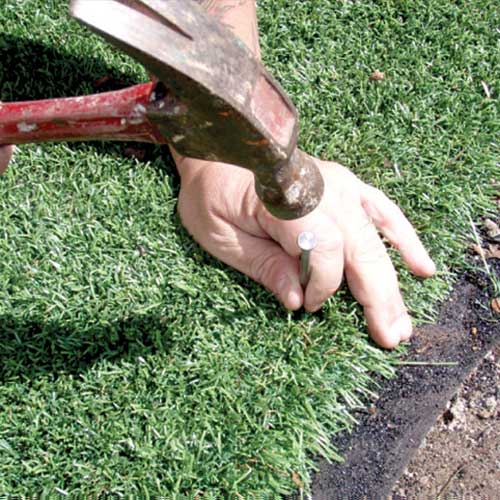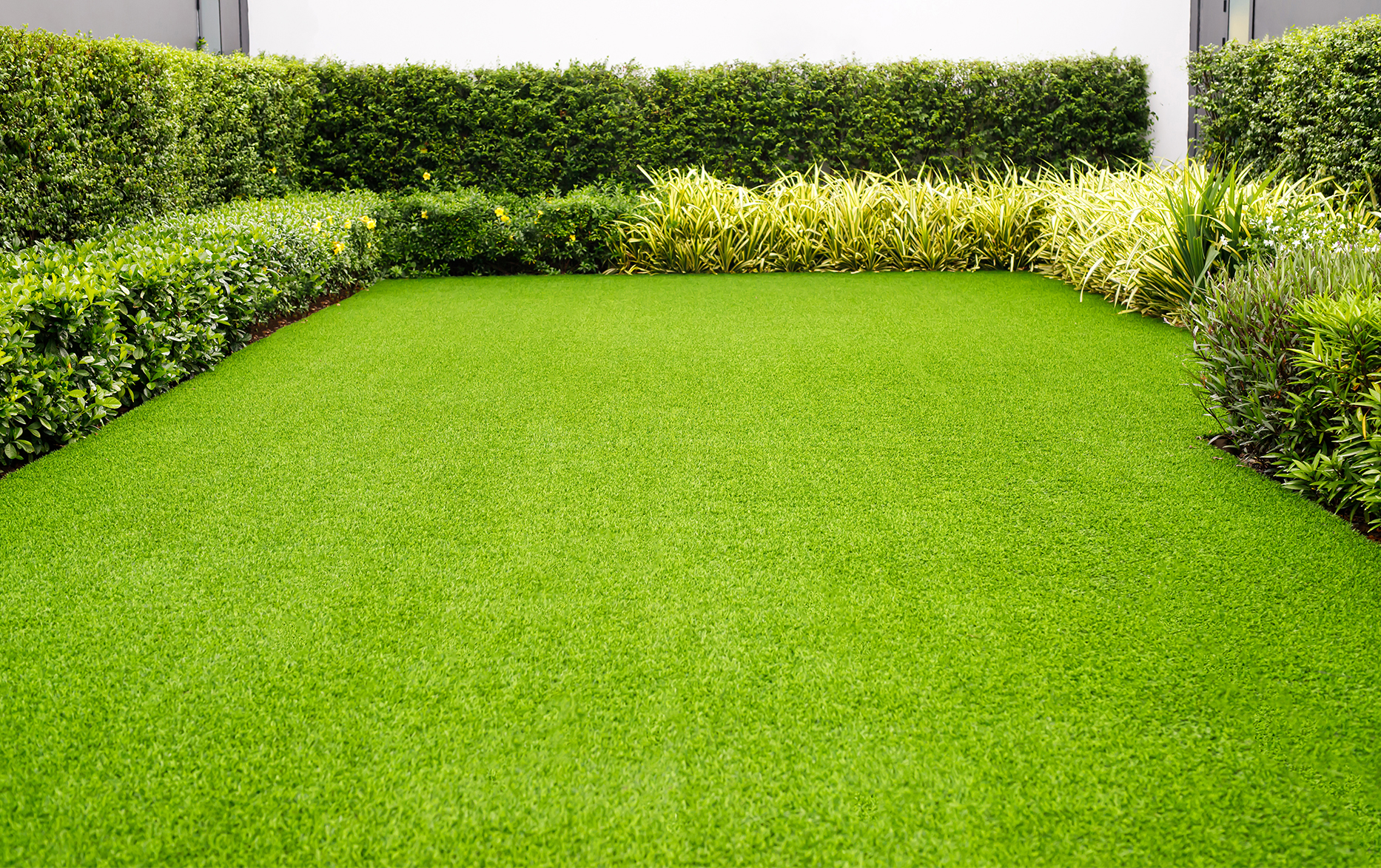High-Quality Arizona Turf Solutions for a Beautiful and Green Landscape
High-Quality Arizona Turf Solutions for a Beautiful and Green Landscape
Blog Article
Explore the Environmental Conveniences of Opting for Artificial Lawn Solutions
The adoption of fabricated turf remedies presents a compelling opportunity to address pressing environmental challenges. By considerably reducing water use and reducing the application of hazardous chemicals, these choices not just promote lasting landscape design yet also safeguard neighborhood communities.
Water Preservation Conveniences
Among the most significant advantages of synthetic grass is its capacity to preserve water. Typical lawn yards need significant watering, particularly in locations susceptible to drought or water constraints. On the other hand, man-made grass does not need watering, considerably decreasing the total demand for water resources. This feature is specifically advantageous in dry areas where water shortage is a pushing concern.
By removing the need for normal watering, synthetic grass adds to sustainable landscape techniques and assists mitigate the ecological effect of excessive water consumption. Moreover, the preservation of water includes the reduction of runoff, which can result in soil erosion and river air pollution.
Furthermore, the installment of man-made lawn enables home owners and municipalities to designate water resources a lot more efficiently, focusing on important uses such as drinking water and agriculture. The change in the direction of man-made grass not just promotes liable water use yet likewise lines up with broader ecological objectives intended at preserving natural resources.
As communities increasingly focus on sustainability, the water preservation benefits of fabricated grass present an engaging instance for its adoption in commercial and household landscaping tasks.
Minimized Chemical Use
The change to fabricated lawn dramatically lowers the reliance on chemical therapies commonly used in natural lawn upkeep. Typical lawn monitoring usually entails the application of plant foods, herbicides, and pesticides to promote development and control pests. These chemicals can present risks to human health and wellness, regional wildlife, and the environment, adding to dirt and water contamination.
In comparison, synthetic grass eliminates the requirement for these damaging substances. Once installed, it needs minimal maintenance, mostly including routine cleansing and infrequent infill replenishment. This decrease in chemical use not just benefits the prompt atmosphere yet likewise adds to more comprehensive environmental stability. By reducing the launch of artificial compounds into the environment, synthetic grass promotes healthier soil and water systems.
Moreover, the absence of chemical runoff connected with synthetic grass installments helps secure regional waterways from pollution, sustaining water life and maintaining biodiversity. Arizona turf. As neighborhoods increasingly focus on sustainable techniques, choosing fabricated grass provides a viable remedy that lines up with ecological preservation goals. Through this change, homeowner can appreciate lavish eco-friendly spaces without jeopardizing eco-friendly wellness, leading the way for a much more sustainable future
Reduced Carbon Footprint

Additionally, the installation of synthetic grass can result in significant water preservation. Natural grass need considerable amounts of water for watering, which not just contributes to the carbon impact associated with water extraction and treatment but also pressures local water resources. On the other hand, artificial grass needs minimal maintenance, calling for no watering, consequently considerably decreasing water use and its connected power prices.
Furthermore, the longevity of fabricated lawn adds to its site link reduced carbon effect. With a life expectancy of as much as 15 years or more, the demand for frequent replacements is decreased, resulting in less waste and reduced power usage in manufacturing and taking care of typical grass choices. On the whole, artificial turf presents a sustainable alternative for eco mindful landscaping.
Environment Preservation
Habitat preservation is a crucial factor to consider in the dispute over landscaping options, particularly when contrasting synthetic grass to natural lawn. Natural grass yards usually require substantial upkeep, consisting of the use of fertilizers, chemicals, and herbicides, which can adversely affect local communities. These chemicals can leach right into the dirt and waterways, hurting native plants and fauna and interfering with local environments.
In contrast, man-made lawn presents an opportunity to reduce the eco-friendly impact of landscape design. By choosing for artificial yard, home owners can lessen the interruption of all-natural habitats connected with traditional grass care methods. Man-made lawn eliminates the requirement for dangerous chemicals, thus safeguarding neighboring wildlife and preserving the integrity of surrounding ecosystems. In addition, the installment of synthetic grass can cause the conversion of former yard locations into more biodiverse landscapes, such as pollinator gardens or indigenous plant locations, which can sustain regional wild animals.
Eventually, the transition to synthetic grass not just preserves water and minimizes maintenance efforts but additionally cultivates an extra unified relationship between human tasks and the natural setting, promoting habitat preservation while doing so.
Long-Term Sustainability
Long-lasting sustainability is a crucial variable in reviewing the benefits of fabricated grass over conventional grass yards. One of one of the most considerable benefits of synthetic grass is its durability; it can last as much as 15-20 years with marginal maintenance, whereas site here natural grass requires regular reseeding and substitute. This long life decreases the demand for consistent sources, such as water, fertilizers, and pesticides, which are crucial for maintaining a healthy and balanced yard yard.
Furthermore, synthetic lawn contributes to a decrease in carbon emissions connected with lawn care equipment. Traditional lawns check these guys out usually need gas-powered mowers, trimmers, and blowers, all of which add to air contamination. Phoenix turf companies. On the other hand, synthetic grass gets rid of the requirement for such tools, advertising a cleaner atmosphere
Additionally, the manufacturing of fabricated lawn progressively utilizes recycled materials, improving its sustainability profile. As makers adopt eco-friendly techniques, the ecological impact of synthetic grass remains to diminish.

Conclusion
The adoption of fabricated turf solutions offers substantial ecological advantages, consisting of significant water preservation, lowered reliance on harmful chemicals, and a lower carbon impact. Fabricated grass help in maintaining all-natural habitats by minimizing land disruption and advertising long-lasting sustainability via the use of sturdy products. Collectively, these elements highlight the possibility of fabricated turf to add positively to ecological health and wellness and offer a sensible choice to traditional landscape design practices in an increasingly resource-conscious globe.
In contrast, man-made grass does not require watering, significantly minimizing the general demand for water resources. By reducing the launch of synthetic compounds into the ecosystem, synthetic lawn advertises healthier soil and water systems.
Moreover, the installation of artificial turf can result in considerable water preservation. In contrast, fabricated lawn requires minimal upkeep, calling for no watering, thereby significantly lowering water use and its connected power costs.

Report this page